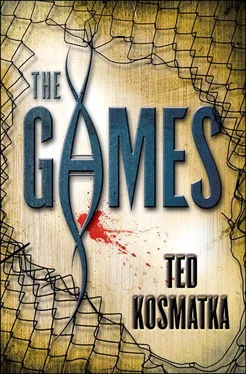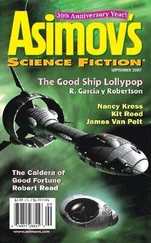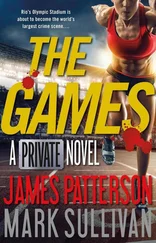“Oh, shit,” Silas said. He’d counted, too.
“What the hell do we have here?” Ben asked.
“I’m going to need some time … to analyze this,” she said.
“How long?” Silas asked.
“A whole career.”
“You don’t have a career.”
“I do now. This is going to take a while.”
Silas concentrated on his footfalls. The morning was cool and dry—perfect running weather—but the last quarter of a mile was always the most difficult. There were several regular morning runners at Helix, and he’d gotten offers to partner up, but he preferred to face it alone. He lengthened his stride, determined to eat the remaining distance as quickly as he could. There had been a time when running relaxed him, but those years were behind him now. At forty-three, running still relieved tension, but it left him more exhausted than tranquil. He wasn’t able to stop thinking about the project, but after five miles, he didn’t have the energy to care, so running still served its purpose.
He rounded the last bend in the path and began the final stretch to the compound general. In the distance, in front of the lab, he could see the flag waving colorfully at the top of its pole. He could see the five interlocked rings. It was silly, he knew, but his eyesight was something he was proud of. He’d noticed, over the years, that most of his colleagues had developed the need for reading glasses or surgery to correct weakening visual acuity, but his own vision had remained strong. He’d read once that myopia was a disease of modern living and could be traced, in many cases, to a childhood spent too much indoors, where the eye focuses almost exclusively within a distance of ten or twenty feet. Silas had spent much of his own youth outside. Eyes ever on the horizon. A portent, perhaps, of the man he would become.
He sprinted the last hundred yards and did his cool-down walk to the elevator. Back at his office, he took a long, hot shower, being careful not to get water in his bad ear, and did a quick shave in the sudsy steam. Then he toweled himself dry and put on fresh lab whites. After a quick stubble check in the mirror, he looked at his watch. It was time for Vidonia’s report. V-day.
He stepped into Vidonia’s lab, knocking twice on the open door. She turned, and her face was unreadable. She motioned him in and continued spreading the sheets out on the table. He’d made a point to stay out of her way for the last two and a half weeks. She’d been pulling all-nighters, so he knew she wasn’t in need of any motivational speeches on his part. He only needed to stay out of her way. She wanted to understand this thing as badly as he did, if perhaps for different reasons.
He waited for her to speak.
“I’ve done a complete workup on the specimen—well, as complete as I could in the amount of time I’ve had. I’m just going to shoot straight with you on this; there’s still a lot I don’t understand.”
“That’s fine. What do you have for me?”
She turned on the underlighting and touched the first plasticine page lying on the glass. “Enough to keep me awake at night.”
He looked down, and the image on the dark sheet was nonsense to him.
“As far as I can discern,” she said, her fingers wandering across the image, “these are the primary digestive organs: the pancreas, gallbladder, and liver. The stomach, here”—she pointed—“is multicompartmental. I think this specimen will be able to digest some pretty tough foodstuffs if the need arises. The intestine is medium-length—typical omnivore. The lung capacity of the organism is enormous. As is the blood volume pumped out by the heart. You’re going to have quite an athlete on your hands.”
“I’ve been thinking about that heart,” Silas said. “The specimen, as you like to call it, isn’t built along avian lines. Too big, too heavy. But if something like this were to actually take flight, it would probably need some outsized cardiovascular equipment to fuel the wing muscles.”
“It certainly would.”
“The six chambers?”
She shrugged. “I don’t know, Silas. It could be a flight adaptation. It could be a practical joke that worked out well. All I can tell you is that the heart is strong, and the pectoral muscles have an unusual striation pattern I’ve never seen before.”
Silas rubbed his eyes, then looked down at the transparency again. “So do you think it will fly?”
“I doubt it. But there are some interesting modifications here. Anything is possible.”
She took a step farther down the table, pointing to a different sheet. “And the sharps at the end of the digits are anchored to the bone—they’re true talons, not just heavy-duty fingernails.”
She picked up another sheet. “The sense organs were the most difficult to evaluate, because there is no way of knowing how the organism experiences the world around it. But certain inferences can be made, and I’ve gone to exhaustive measures to see to it that my evaluations are accurate. If I have erred, it is on the side of caution. With that said, I have to admit that the eyes gave me pause. There is a distinct tapetum lucidium across the retina, and the cone configuration confirms that the specimen has nocturnally adapted vision.”
Silas couldn’t think of a response. It was getting crazier and crazier.
“The visual resolution is better than my ability to test. The hearing, too, is off the scale, but I noticed several peaks in acuity.” She handed him a sheet. “The largest was at three thousand hertz, well out of the human range of hearing. The second-largest peak was at one hundred twenty hertz, the average frequency of human speech.”
“So it’s a good listener.”
“It does more than listen.”
“You ran an oscillogram?”
“I had a hunch, so I went with it. I figured it had that bipolar auditory acuity for a reason, and when I tested its vocalizations, I found I was right. Half the waveform was above three thousand five hundred hertz.” She slid another transparency under the light. “As you can see from the waterfall spectrogram, there is a clear distinction here”—she pointed to a flat spot within the three-dimensional range of peaks and valleys. “Everything on this side we can hear; everything on the other side, we can’t.”
“So this means what?”
“It hears us fine, but we can only pick up about half of its vocalizations.”
Silas nodded and picked up the fifth sheet, holding it up to the light. A dark oblong shape in a case of bone. He didn’t have to ask her what it showed. “How large?”
“Cranial capacity is probably nineteen hundred ccs.”
Silas whistled softly. “That’s a lot of gray matter.”
“Larger than an average human brain.”
“This thing isn’t full-grown yet,” he said. “What kind of brain-to-body mass index are we talking about?”
“Top-heavy,” she said. “The numbers aren’t as meaningful at this stage of development, but the specimen certainly seems likely to surpass our index. The study of the heart could take one career; the study of the brain could take another.” She pointed at the dark image captured in the plasticine. “The cerebral cortex is highly folded and highly specialized. Both the telencephalon and corpus callosum—if those terms even apply, which they may not—are unusual in their association to the other parts of the brain.”
“I’m not an anatomist, doctor.”
“The brain is huge, and I don’t understand the way it’s organized. About all I can say is that the structures responsible for the higher functions appear to represent a large percentage of the overall mass. I’m shooting in the dark here, but I think this specimen has the potential to be very, very intelligent.”
Читать дальше












